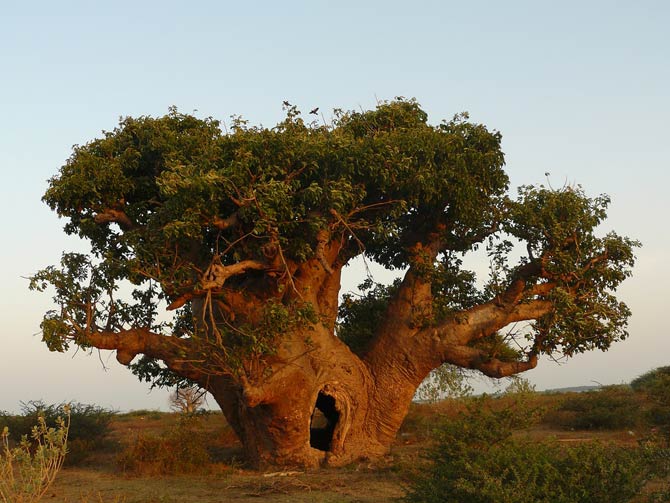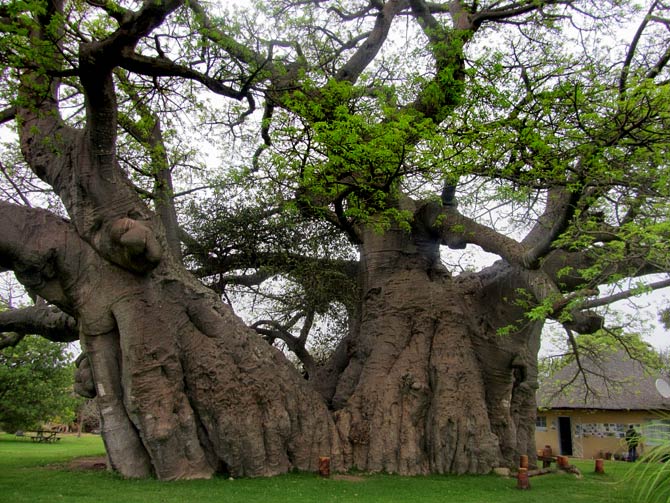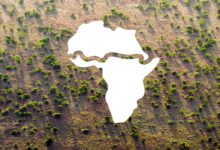Baobabs are dying…
The largest and oldest baobabs have been dying out over the past 12 years. Some of them were even 1,700 years old. What is the cause of it? To all the almost undeniable evidence that climate change is real and is causing tremendous damage to our planet, we add another strong rationale: the sudden death of several majestic ancient African baobabs.
Baobabs, with their massive, often hollow trunks, shiny fibrous bark, and tall knotty root-like branches, are scattered across the African savannah. It is a strange-looking tree – one legend says that god threw it out of paradise and landed upside down on Earth where it continues to thrive 🙂

Even 2000 years
Baobab is a tree that, according to conservative estimates, can live up to 2,000 years. However, a June 2018 study published in the journal Nature Plants reveals disturbing news about African baobabs (Adansonia digitata). Nine of the 13 oldest baobabs and five of the six largest trees that researchers have studied over the past 12 years have died.

Baobabs extinction
The causes of sudden extinction are, so far, unclear. However, drought caused by climate change is the prime suspect. The study shows that the death of most of the oldest and largest African baobabs in the past 12 years is an event of unprecedented scale.
This death was not caused by an epidemic, and there has been a sharp increase in the number of apparently natural deaths of many other mature baobabs. It is suspected that the decline of the monumental baobabs may be related, at least in part, to significant changes in climatic conditions, particularly in South Africa.
It is strange and unprecedented that so many trees that live so long die simultaneously. The study authors note that more research is needed to find the definitive cause. “However, if approximately 70% of 1,500-2,000-year-old trees die within 12 years, it is not normal”, says Erika Wise, head of the Climate & Tree Ring Environmental Science research group at North Carolina University. “It’s hard to think of anything to blame other than climate change.”

Fire resistant
Baobabs, it should be emphasized, are trees that are not easy to kill. In fact, their durability is legendary for their ability to withstand fire and remove bark (similar to eucalyptus). The dense, fibrous bark is extremely resistant to fire, and even if the inside is completely burned out, the tree is still alive. Growing back after a fire causes a thickened, uneven coating that gives the tree a knotty, elephant-like appearance, but serves as additional protection against fire.

The death of the largest baobab
Baobabs grow so large that their hollow interiors often serve as shelters, water storages, or for local gatherings.
Between 2005 and 2017, as researchers began measuring and recording dozens of the largest baobabs, it was observed that the massive trees began to die out.

Sunland Baobab
The largest of them, known as the Sunland baobab, located in the province of Limpopo in South Africa, was 22 meters (72.2 ft) high and 47 meters (154.2 ft) in circumference, with a trunk diameter of 10.64 meters (34.9 ft) and a crown diameter of 30.2 meters (99 ft). Its trunk consisted of two interconnected parts, each with its own huge depression, and they were connected by a narrow passage.
Tourist attraction
The Baobab Sunland became a popular tourist attraction after 1993, when the owners of the Sunland farm established a bar and wine cellar in an empty trunk. One-third of the tree collapsed in August 2016. In 2016 and 2017, the baobab broke four times and five trunks were crushed – photo below.

The cause of the baobabs extinction
Recent research shows that the death of millennial baobabs in recent years is likely the result of a combination of two factors – temperature rise and drought.
When another big baobab collapsed in 2016, scientists found it contained only 49 percent water, compared to 79 percent for a healthy baobab.

There are 8 species of baobabs
- Adansonia digitata
- Adansonia grandidieri
- Adansonia gregorii
- Adansonia madagascariensis
- Adansonia perrieri
- Adansonia rubrostipa
- Adansonia suarezensis
- Adansonia za

Recommended
- The tallest trees – Top 10
- Roses – the history of the most beautiful flowers in the world
- Kruger National Park
- Fastest animals – Top 100
- Fastest animals – on land, in water and in the air
- Fastest mammals
- Fastest birds
- Cheetah
- Most venomous snakes – Top 10
- Largest eagles – Top 10
- Largest birds of prey
- Smartest dogs – Top 10
- Animals records
- Largest crocodiles
- Longest whales
- Heaviest whales
- Longest snakes
- Most venomous snakes
- Largest sharks
- Top-flying birds


















